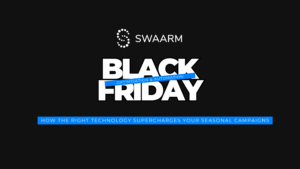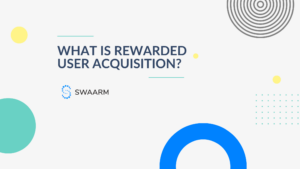Rewarded user acquisition (Rewarded UA) has become one of the most powerful tools in the mobile marketer’s toolkit. By offering users tangible incentives in exchange for engaging with ads or completing specific actions, apps can drive installs, boost engagement, and increase retention. But while the foundation of rewarded campaigns is straightforward, the real opportunity lies in going beyond a “one-size-fits-all” approach.
Personalization and reward tiering are two practices that can transform rewarded UA from a basic engagement tactic into a sophisticated growth strategy. By tailoring rewards to individual user segments and offering different levels of incentives, publishers can maximize relevance, improve user satisfaction, and optimize return on ad spend.
Why Personalization Matters in Rewarded User Acquisition (Rewarded UA)
Not all users are motivated by the same things. Some may be casual players who engage with a mobile game only occasionally, while others are highly active and deeply invested in progressing. Similarly, in non-gaming apps, there are users who explore features lightly and those who quickly become power users. Delivering the same type of rewarded experience to all these users risks leaving both groups unsatisfied: the casual user might feel overwhelmed, while the dedicated user might feel under-rewarded.
Personalization addresses this challenge by recognizing that different user groups value different types of rewards. For example, new users often need small boosts early on to help them explore and get hooked. Long-term users, on the other hand, might be more motivated by exclusive content or significant bonuses that feel worthy of their time and commitment.
By mapping rewards to user behavior, apps create experiences that feel relevant and valuable. This relevance fosters stronger engagement and deeper trust, which in turn translates into higher retention and lifetime value.
The Power of Reward Tiers
Reward tiers are a practical way to implement personalization. Instead of providing a flat incentive across the board, apps can design multiple levels of rewards that scale with the user’s engagement or potential value.
For example, a casual user might be offered small rewards such as extra lives or bonus coins for watching a short ad. An engaged user could be presented with more substantial incentives like access to rare items or time-limited boosts. Meanwhile, high-value or “VIP” users might receive premium content, larger currency bundles, or exclusive experiences in exchange for completing higher-value actions.
This tiered structure ensures that rewards feel balanced: not so small that they’re ignored, and not so large that they devalue in-app purchases or overwhelm the app’s economy. Instead, rewards are matched to user expectations and needs, which makes the overall campaign more effective.
Practical Applications of Personalization and Tiers
Implementing personalization and reward tiers doesn’t have to be overly complex. Even a few thoughtful adjustments can create meaningful improvements in user experience.
One effective approach is segmenting users based on their lifecycle stage. For new users, rewards should focus on onboarding and early engagement. For example, giving a bonus for completing the tutorial or offering extra currency after the first session helps build momentum and encourages continued use.
For mid-tier users who have demonstrated commitment but aren’t yet spenders, rewards can serve as nudges to keep them engaged and potentially convert them into paying customers. Offering double rewards at key milestones or unlocking exclusive trial features can spark further interest.
For power users or high spenders, the strategy shifts toward exclusivity and recognition. Offering them premium rewards—such as access to advanced features, early content releases, or rare in-game items—makes them feel valued and can deepen loyalty.
Another application lies in giving users choice. Allowing them to select from a range of rewards (for example, bonus coins versus a rare skin) not only enhances the feeling of control but also makes the reward itself more appealing. Choice reinforces the perception that the app is catering to individual preferences rather than pushing generic incentives.
Balancing Personalization with Business Goals
While personalization and tiers can deliver impressive results, they also need to be carefully balanced against business objectives. Too generous rewards for the wrong segment can increase costs without driving meaningful returns. On the other hand, rewards that are too stingy risk disengagement and churn.
The key is to continuously monitor data and adjust reward strategies based on performance. Metrics such as retention, average revenue per user (ARPU), and lifetime value (LTV) should guide decision-making. If a particular segment responds strongly to higher rewards and produces greater downstream revenue, investing more in that group may be justified. If another segment doesn’t show meaningful improvement, rewards can be scaled back or restructured.
Challenges and How to Overcome Them
One of the biggest challenges in personalization is complexity. The more segments and tiers you create, the more difficult it becomes to manage campaigns effectively. To avoid being overwhelmed, it’s often better to start with a few broad segments—such as new, casual, and power users—before introducing more nuanced tiers.
Another challenge is fairness. Users who perceive that others are receiving better rewards may feel disadvantaged. Transparent communication helps mitigate this risk. Explaining that rewards are tied to engagement or activity levels can frame differences as fair and earned.
Finally, apps need reliable data infrastructure to support personalization. Without accurate analytics and attribution, it becomes difficult to understand how different segments behave or how rewards influence long-term outcomes. Investing in robust measurement tools is essential for scaling personalization strategies.
Conclusion
Personalization and reward tiers are not just add-ons to rewarded user acquisition—they are fundamental practices for maximizing impact in today’s competitive app ecosystem. By tailoring rewards to different user groups and offering tiered incentives, publishers can deliver experiences that feel relevant, engaging, and rewarding in the truest sense.
The result is a win-win: users feel valued and motivated, while publishers and advertisers see higher conversions, stronger retention, and better monetization. As acquisition costs rise and user expectations evolve, the ability to personalize and scale rewarded campaigns through tiered structures will increasingly separate the leaders from the rest.
For apps seeking to unlock the full potential of rewarded UA, the path is clear: move beyond uniform rewards and embrace strategies that recognize the diversity of user motivations. When you do, you transform rewarded UA from a simple transactional exchange into a powerful driver of long-term growth.



